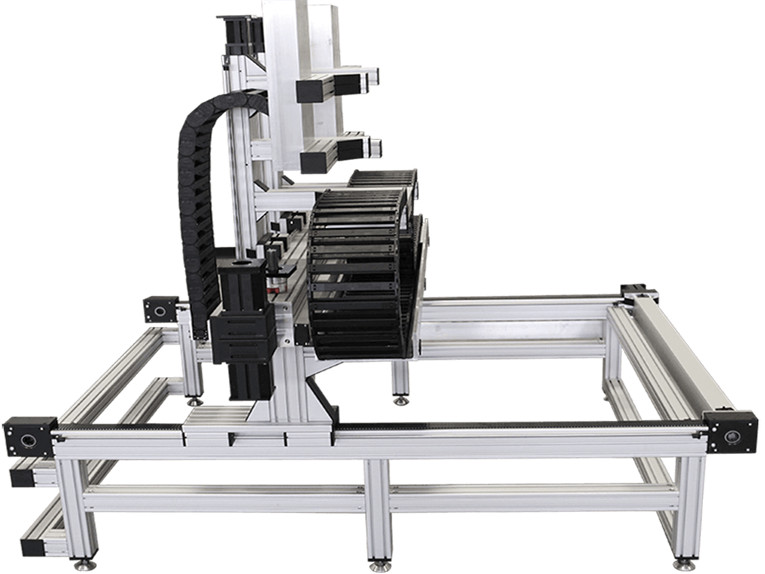
High-precision Z axis
A manufacturer of a highly precise SLA style 3D printer needed to hold layer resolutions to an exacting level of 10 µm. The mechanical accuracy of the constant-force anti-backlash nut and leadscrew coupled with the high performance of a smart step-servo motor made for a system well within the specification at lower overall system cost — as this assembly needed no linear encoder for feedback from the point of interest.
X-Y contouring and dispensing
A fused deposition modeling (FDM) 3D printer tends to produce a part that shows ridges or the beads from each layer as it is placed on the printed part. Working with an FDM machine builder and using the consistent performance of the constant-force anti-backlash nut features, engineers were able to decrease the surface finish and layer resolution of prints while using the control commutation capabilities of a smart step-servo motor to improve performance resulting in twice the process output of a typical FDM printer.
Medical syringe pump
A leading manufacturer of syringe pumps for medical applications needed the highest levels of fluidic control with minimal flow variance over time. This was critical to their lifesaving equipment. Specific life tests were conducted with a constant-force zero-backlash nut and screws operating side-by-side with competitive screw-and-nut assemblies using a conventional coil spring and collet. In the end, all the conventional designs failed to complete the test due to loss of preload, but the final results showed the leadscrew assembly with the constant-force nut to be 200% better for fluidic accuracy over the full 1.5 million cycles targeted.
Metals additive-manufacturing platform
Ballscrews are proven to be the product of choice for heavy load and high duty-cycle applications, and ground ballscrews offer extremely high precision. Even so, there are a growing range of applications for which the choice between rolled ballscrews and leadscrews isn’t as clear.
Consider how a leader in metal additive-manufacturing machines tested leadscrew and motor assemblies head-to-head with a similar rolled ballscrew unit. A leadscrew assembly with superior thread rolling, a polymer nut, and a motor optimized for linear performance exhibited less backlash and higher accuracy than a comparable ballscrew-based actuator.
What’s more, the polymer nut’s self-lubricating nature eliminated the need for added lubricants … making the machine process cleaner and safe from printed-part contamination. Secondly, metal-to-metal contact was eliminated between the nut and screw. This reduced noise for much quieter operation. In the end, the integrated leadscrew delivered superior cost advantages and print quality.
Post time: Feb-14-2022







